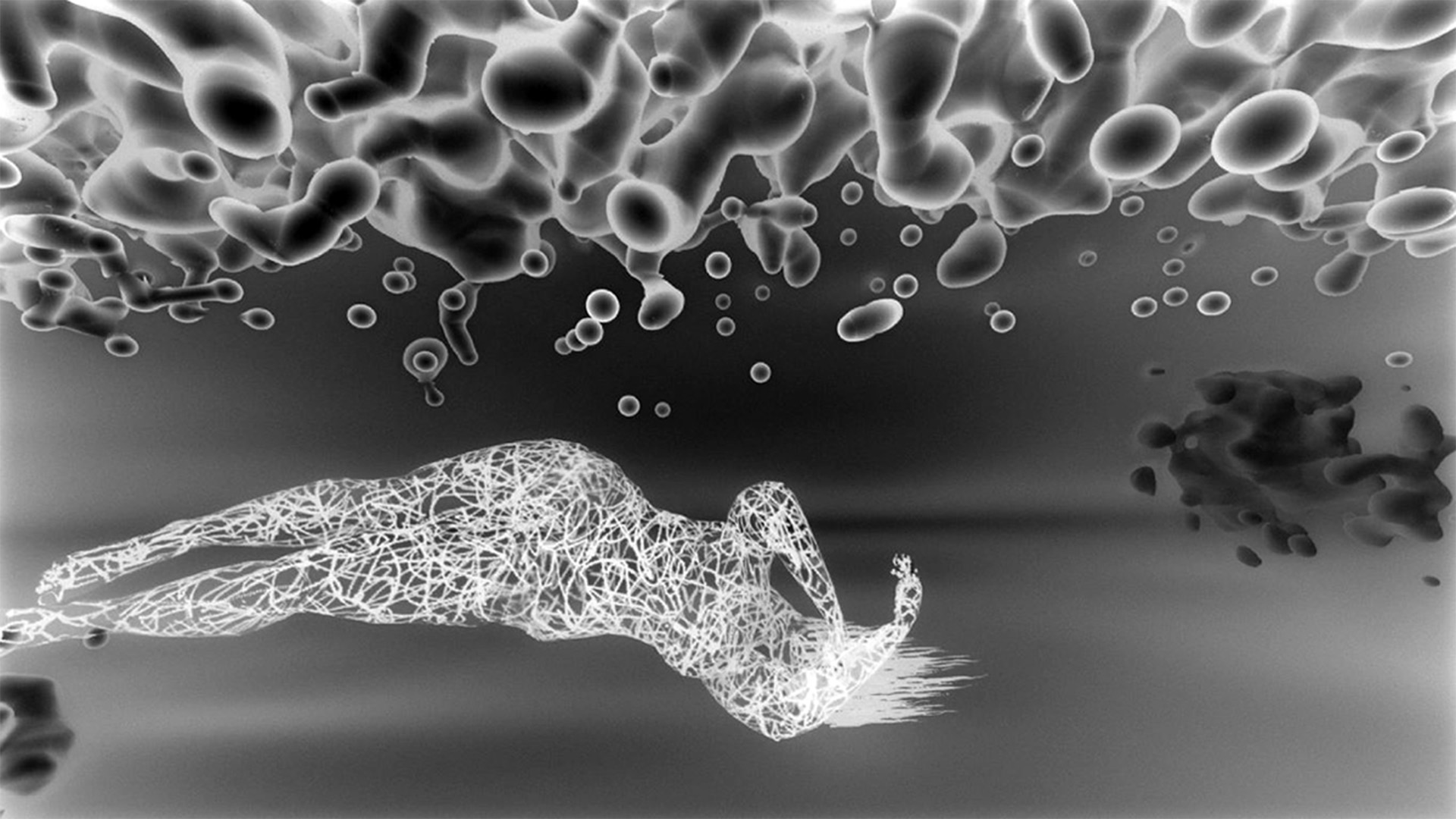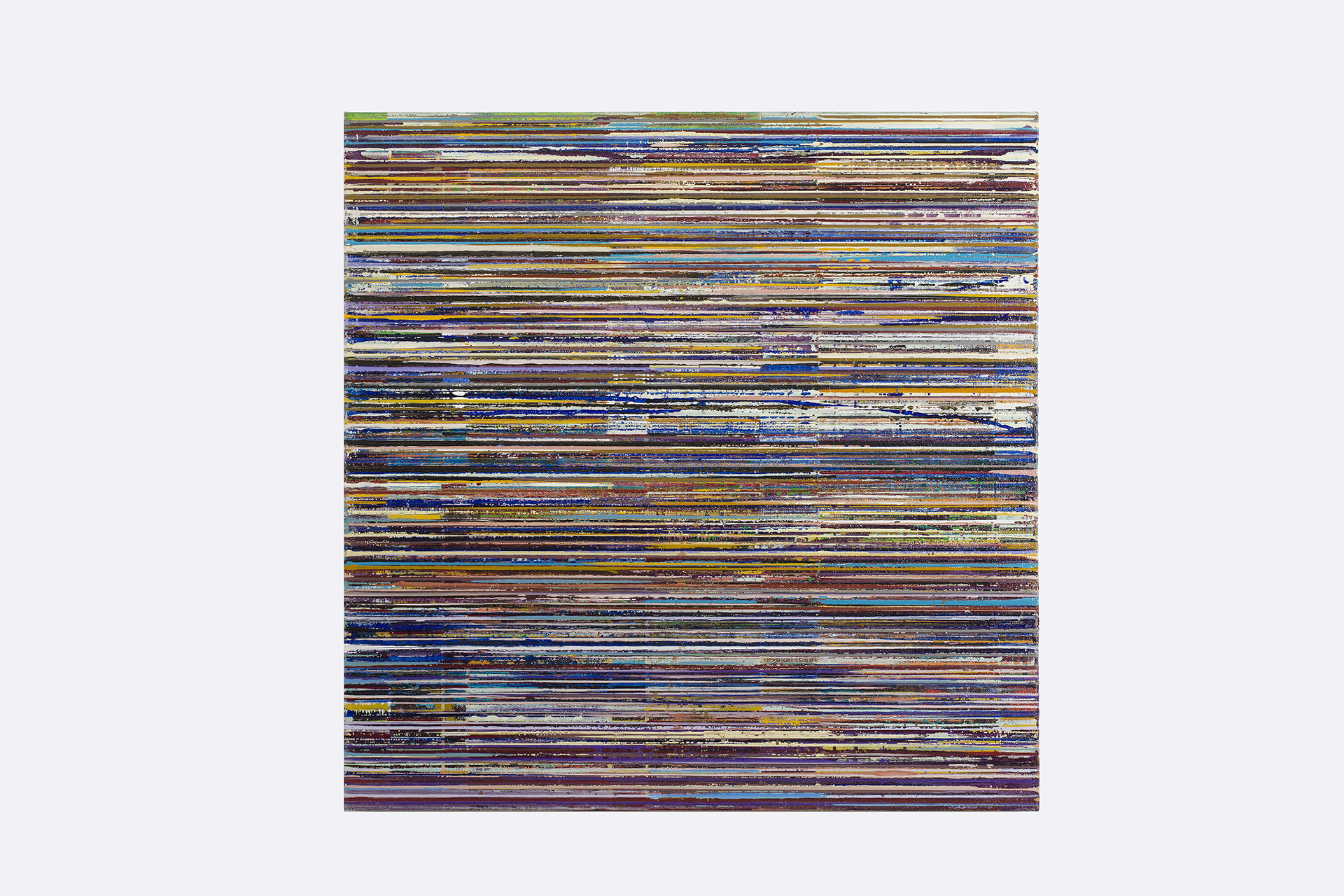Blog
Timeless Mythologies
28 February 2024 Wed
An Interview with Necmi Sönmez on “Hyper Digital Forces”

DENİZ CAN
denizdcan@me.com
I am sure many of you have heard of the mythological story of Daphne turning into a laurel tree, or the tragedy of King Oedipus.
The story of Io who spellbound Zeus, is one of the favorite mythological narratives of my childhood, and the legend of Simurgh is among my beloved tales of more recent times. Zeus is enamored with the beautiful, kind-hearted, and innocent mortal Io for a while. However, Hera, who was constantly cheated on and had the misfortune of being the villain of all the stories she is a part of due to her jealousy, defied this relationship. To shun Hera's wrath, Zeus initially turns Io into a cow. However, suspicious of the situation, Hera immediately pesters Io with a fly in an attempt to take her revenge for alleviating her pain and anger to some extent. Allegedly poor Io, who threw herself into the waters to get rid of this fly, created the Bosphorus. In this version, which I have briefly narrated, this place is the Sinus Ceratinus, in other words, the Golden Horn. The legend of Simurgh, on the other hand, tells the story of thirty birds who manage to pursue the difficult path they set out to reach their savior without giving up. I have always been impressed by the willpower of these birds who realize that they are the salvation they were looking for only when they reached Mount Kaf.
We all enjoy listening to mythological stories from time to time, either as fairy tales or as narratives from a magical world, and marvel at where they led. Perhaps this is why Carl Jung considered mythology as a healing tool that opens the door to the unconscious.
As of September 16, 2023, the exhibition Hyper Digital Forces curated by Dr. Necmi Sönmez and hosted by Borusan Contemporary opened its doors to visitors simultaneously with the show Mat Collishaw: Arrhythmia under the curatorship of Alice Sharp. Neon sculptures, video installations, digital photographs, works on paper, canvases, and collages are among the works that open up the possibility of making comparisons and forging relationships between the concepts of new and old images.
Sönmez's suggestion that New Media Art democratizes mythologies by taking them out of the monopoly of gods and goddesses is one of the expected consequences of the increasing accessibility of technology. Moreover, these effects can be seen not only in art but in all areas of life.
John Gerrard's Endling (Martha), which accompanies Erwin Redl's site-specific intervention Meandering (2013) on the second floor of the Hyper Digital Forces exhibition, made me recall the legend of the Simurgh. I wonder if Martha, the last of a dying breed, who died in 1914 after spending her entire life in the Cincinnati Zoo, would have found salvation had she not been left alone.

Claudia Hart, “Dream”, 2009.
Brigitte Kowanz's Spatium, which greets visitors at the entrance of the Hyper Digital Forces exhibition, is the outcome of experiments on light, perception of space, and language. Between the letters of the word (spatium), which means extent, interval, or the space between celestial bodies that is believed to be infinite, there are distances like the aforementioned gaps, yet for once limited. The work is also in the form of a sphere that encompasses the space inside. On the other hand, the light emitted from the neon seeps out of this mass, expanding and blurring its boundaries.
Other works in the exhibition also play with the perception of space through the diffusion of light into the room or the relations with the surface. For example, François Morellet's Neons 3D: 60-90-35, Chul Hyun Ahn's Mirror Drawing, Erwin Redl's Meandering, and Keith Sonnier's Ballroom Chandelier Installation are the works that first come to my mind.
Through Jennifer Steinkamp's Daisy Chain, one gets the feeling that there is an open window in the exhibition space. Perhaps when we look at the Bosphorus through that window, Io would also join the narratives of these artists.
⁂
Deniz Can Taşçı: From the moment I started working on this text about Borusan Contemporary's new collection exhibition, I had the overwhelming feeling that the first seeds of inspiration for this show were planted with John Gerrard's Endling (Martha). What inspired you to curate an exhibition centered around Hyper Digital Forces?
Necmi Sönmez: The first formative notions in the preparation process of the exhibition were the frameworks we determined as a result of our collaboration with Kumru Eren. Borusan Contemporary Collection has a very comprehensive structure and over some time, we worked on what we should pay attention to when interpreting the collection from perspectives that have not been addressed before. As a result of this collaboration, the following idea has been developed: Creating a panorama on each floor in the Perili Köşk by bringing together the works of the same artist as much as possible. For the reason that the collection included periodical works by many artists spanning more than a decade. While working on these, I realized that the video sculpture by Daniel Canogar, which has been at the main entrance of Borusan Contemporary since the opening collection exhibition, had remained at this location ever since. While I was thinking about what we could show instead, I came across Brigitte Kowanz's neon sculpture Spatium, and Kowanz is among the artists who are predominantly represented in the collection. The important step in this course of inspiration that began with the replacement of Canogar and Kowanz was John Gerrard's Endling (Martha). The idea of placing this work, commissioned by Borusan Contemporary, in the area in front of the main elevator of the Perili Köşk guided me for both the name of the exhibition and the way I should proceed with the other exhibition spaces.
DCT: We have had the opportunity to work together in two exhibitions so far. I have also followed your previous shows with great pleasure and curiosity. Based on these experiences, I know that in your exhibitions, the stories you tell, and the research you conduct beforehand are as important as the selected works themselves. How do you define the narrative that you want to convey through Hyper Digital Forces and how does this narrative bridge the selected works?
NS: The Borusan Contemporary Collection, which I have been following closely since its foundation, has a multi-focused structure. It is not possible to summarize this with a few concepts, sentences, or artist names. But it is obvious at first glance that there is a strong visual connection between the works. What interested me was how I could take this relationship in a different direction and what kind of associations I could establish for new links and correlations. During the preparation phase of the exhibition, I was listening to Gluck's opera Orphe and Eurydice. Since my childhood, I have always been interested in mythological heroes, the strange love stories between them, their kinship, and their struggles.
As I worked on the exhibition, I started to think that the times we held witness are also creating the mythologies of the present by using different digital technologies. Since digital techniques—as new forms of production—enabled artists to construct their own mythologies, I noticed that mythology, which previously amounted to the stories of gods and goddesses, was democratized, and turned into outputs that are part of daily life. Thus, art was stripped of the sanctity and sublimity that surrounded it and turned into imaginary spaces where emotions and thoughts of the present day appeared in the corridors illuminated by electric light and neon. The main narrative of the exhibition focuses on the feelings, thoughts, and longings of the present.
DCT: Are there specific messages and goals you want visitors to take away from this exhibition?
NS: I would like to sincerely state that I do not tend to convey certain messages to the audience. I am more interested in creating the environmental conditions that allow them to have personal experiences when they are alone with the artworks. After all, there is one thing we should not forget: Borusan Contemporary is neither a classic museum space nor a white cube. This appealed to me from the very beginning. This is a place where people work and produce at a very intense pace five days a week, so there are traces of labor and devoted work in every corner. I tried to bring together the concept of "digital mythology" with the artworks that are placed next to and around such traces. Exhibiting works produced with digital technology in an increasingly digitalized working environment is also important in terms of breaking certain prejudices.
DCT: Were there any challenges and issues you had to consider during the curatorial processes of these selected works?
NS: Since a significant portion of the works in the Borusan Contemporary Collection were placed in different production and management locations of Borusan, they had to be collected and up-to-date condition reports had to be prepared. However, since I was working with a team of dedicated staff, I had no difficulty in overcoming such challenges.
DCT: For you, which interactions between the various works in the exhibition that speak to each other should be underlined? Are there any consciously formed contrasts or associations between certain works?
NS: This nice question is a good opportunity to reveal the vertical harmonies between the different floors of the exhibition. It is important to emphasize the chain of associations that starts with the Kowanz sculpture hanging at the main entrance, repeats with neon/light-based works on all floors, and ends with Keith Sonnier's ceiling sculpture on the eighth floor. In addition, the sensation of color has an extremely important formative role in the collection. Ayşe Erkmen's floor sculpture on the balcony of the second floor, the work by Beat Zoderer on the upper terrace floor, and Ekrem Yalçındağ's mural in the tower feature a "color interpretation" that should be considered together. I think those who view the exhibition closely will discover such associations. I would also like to mention the chain of flowing images formed by the overlapping single-channel video works exhibited in the areas where the elevators connect.

Lisa Nankivil, “After Jimi Hendrix”, 2008.
DCT: Did any unexpected relationships and dialogues between the works emerge during the curation process and surprise you?
NS: I had wanted to exhibit a kinetic sculpture by Laurent Bolognini for a very long time. This work was installed in the open space on the second floor before the exhibition. When I was setting up the show, I was surprised to see the reflections of the work by Brigitte Kowanz, which I exhibited on this floor, appear in the glass windows for a moment when the evening twilight was illuminated by the magnificent Bosphorus lights. Both Bolognini and Kowanz used electric light in their works, and they came together thanks to these reflections. On the 3rd floor, after hanging Lisa Nankivil and Yağız Özgen's abstract canvases in successive rooms, when I looked at them from a certain perspective, I was pleasantly surprised to see a companionship I had not noticed before.
DCT: Can you tell us about the experience you hope to offer to visitors exploring the Hyper Digital Forces exhibition?
NS: Art has important messages for us today, about the times we live in. Digital technologies can open the doors to very broad experiences in that sense. We started our talk with John Gerrard's work, which brings up the fascinating story of a pigeon that is now extinct. Shilpa Gupta's sentence, written with LED lights, emphasizes this: The world that awaits us every day, every morning when we wake up, is a chance that is free from tedious repetition indeed. On the seventh floor, Claudia Hart's video Dream has powerful messages about the journey of existence that present-day human beings go through.
DCT: Are there specific feelings, thoughts, or discussions you want to evoke through the works in the exhibition?
NS: No, I don't have such a goal. I think the audience should respond to this by grasping it with their own effort, in their own way of seeing, and by developing their personal point of view.
DCT: How did you begin to balance the immersive potential of digital art with the physical limits of the exhibition space?
NS: When creating the conceptual framework, I start with how the works in the collection can be interpreted differently rather than the exhibition space and its boundaries. There are photographs, paintings, and installations in the collection as well as digital works, so I need to develop certain techniques of presentation for them as well. On the other hand, as you have already emphasized, the Perili Köşk characteristically frames the exhibitions with its own architectural structure. This also affects my interpretation. But I must say that I overcame many difficulties by working with the artists and through their contributions and support.
ABOUT THE WRITER
Deniz Can joined the creative industries in 2011 in Izmir as the program director of KKSM. She realized the first Art Route events in which exhibitions on a monthly-created road map are discussed during visits with the support of local administrations, cultural institutions, and universities. The event series planted the seeds for the experiential art initiative that she co-founded. Can, who continues her works focused on arts and visitor experience in Istanbul, Izmir and abroad, moved to Istanbul to continue her institutional curatorial practice as an independent curator. She carries forward her academic writing skills professionally following the education she received in American Collegiate Institute, Economy Department in Koç University and Masters in Cultural Management at Istanbul Bilgi University



